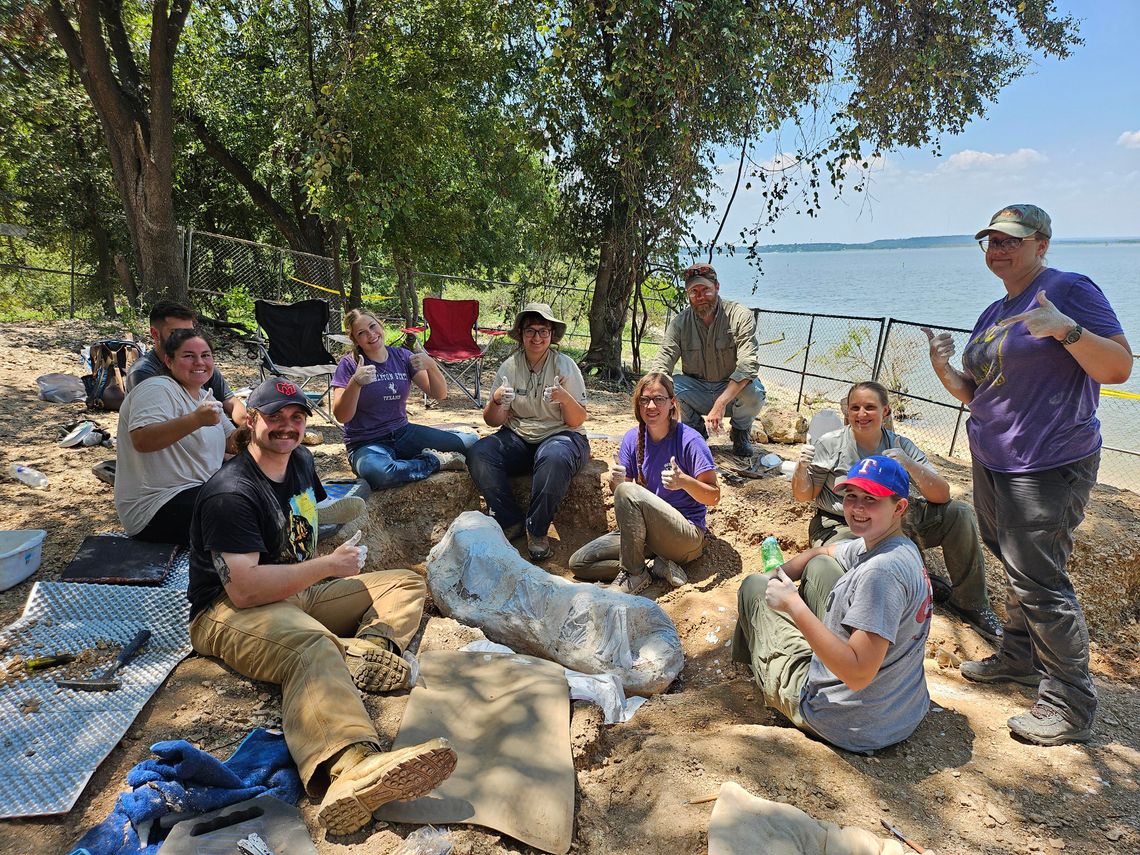BY BRENNA DEMPSEY / Multimedia Journalist
A fossilized mammoth was found in Central Texas over the summer and Tarleton State University students helped in the excavation process.
The remains were found by campers walking on the lakeside who stumbled upon the fossils of a Columbian mammoth. Not to be confused with the woolly mammoth which lived further up north.
The first visible part of the mammoth was a tooth and the campers quickly told the park attendants what they found.
Once the U.S. Army Corps of Engineers identified the tooth, lead park ranger, and Tarleton alumnus, Jarod Briscoe reached out to his alma mater and eventually Kris Juntunen instructor of Geosciences.
Plans to send a team out to excavate the fossils were underway as news spread quickly in the local community making the mammoth a hot topic.
Before the start of the dig, Briscoe and Juntunen went to look at the site only to find two teeth had been stolen and part of a tusk was exposed.
The looters tried to take the tusk as well, but the fossils at this site were not very well preserved and the tusk was damaged when they tried to remove it.
Removing artifacts and certain kinds of fossils from government property is a federal crime. The people who first found the mammoth did the right thing by reporting it to the park attendant.
The U.S. Army Corps of Engineers quickly contacted the Bosque County Sheriff and the site went into lockdown and was classified as a crime scene.
The investigation proceeded and as the authorities grew closer, the looter returned the stolen teeth to the U.S. Army Corps of Engineers to avoid facing federal charges.
This is an unexpected outcome because stolen fossils are often never recovered and all the information the paleontologists could have learned would be gone for good.
“The looting destroyed some material which is unfortunate and had we not gotten the teeth back, well, that’s a large amount of data from this mammoth that we just wouldn't have,” Juntunen said. “Ultimately, what they took from us was data.”
Dava Butler, a doctoral candidate at Baylor University who is working alongside the Waco Mammoth National Monument was able to look at the teeth. She estimated the mammoth’s age to be around 41-45 years old when it died and based on secondary traits, it was likely male.
Now that the stolen teeth were back in the right hands the dig was able to start on Aug. 3 and did not end until Sept. 9.
Juntunen and Butler worked with Dr. Lindsey Yann, a National Park Service paleontologist with the Waco Mammoth National Monument, to put together a team of students, interns and other volunteers who would all work to excavate the mammoth.
Excavating the fragile fossils was no easy task because of the environment.
“It was the easiest dig that I’ve ever been on location-wise,” Juntunen said. “So it should have been easy breezy, but the sediment actually made this one of the more challenging digs I’ve ever been on.”
The ground was made of crumbly clays and limestone which made it difficult to tell the bone from the rocks, he said.
“You could just scrape right through bone without even noticing,” Lilly Lindsay, a geoscience major and volunteer on the dig, said.
The dig was a learning opportunity for the volunteers.
“I think the importance is basically the student experience and getting to actually do real paleontology,” Juntunen said.
It also opened the door for students to discover potential career paths.
“It definitely made me think about maybe doing some paleontology in the future,” Lindsay said.
They discovered a mystery bone that is believed to be a skull piece or a shoulder blade, a radius, a partial rib, a tusk and a spinous process. A spinous process is a pointy bone that sticks out on the backbone.
The last of the fossils were transported to Tarleton State University on Sept. 20 and were reunited with the two teeth that were brought back many weeks before.
There the fossils will be studied and used to help further the geoscience students' education.
“We will get students rounded up to begin doing prep work probably in a few short weeks,” Juntunen said. “Starting next semester, I want to start looking into actual research positions for students who want to take that a little bit further and get some research done.”
The writer of this story, Brenna Dempsey, personally participated in the dig as a volunteer.
.png)

Comment
Comments